How to Improve Ecommerce Customer Relationships

Incentivize Email Newsletter Signups
Your customers want you to keep in regular contact with them. That’s why 72% of consumers in a recent poll agreed that the preferred method of contact between them and an online business is via email. To get customers to sign-up for your newsletter and grow your email subscriber base, though, you’ll need to incentivize them first.
You might be thinking: “Well, can’t I just reach out to them on social media and build relationships that way?” The simple answer is: You need a more top-to-bottom approach when it comes to ecommerce newsletters and customer relationships.
How can you incentivize users to sign-up to your newsletter?
- Build the option into the member sign-up and guest checkout sections of your store.
- Offer a unique value proposition, like 10% off your next order when you sign-up.
- Give them perks, like free shipping on their current order, for signing up.
How important are newsletters and customers emails when building relationships?
Dig these factoids: About 33% of emails are opened by recipients, with 44% of them making a new purchase over the course of the year and more than 50% of them being active users. Even better? Emails are 400% more effective at customer acquisition than social, and appeal to the vast majority of ecommerce consumers.
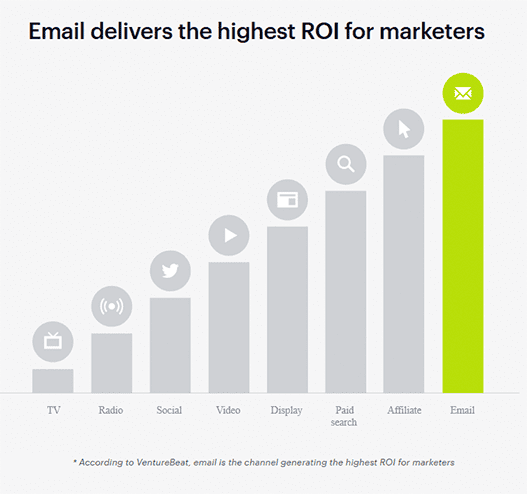
The fact of the matter is: Newsletter and email marketing both have a strong ROI that’s 3,800% (or more), with the average company reporting $76 in ROI (per email) and a 28.5% return overall. Put into better terms, the return on investment is approximately $38 for every $1 you spend.
So, if you’ve been putting off getting on the bandwagon, convince yourself in our related guide: Why Email Marketing Just Became Cool Again.
Use Social Proof as a Brand Banner
Today’s modern age requires that your brand be present on multiple social media channels to stay relevant. You’re going to want to take things a step further by using social proof as your brand’s banner.
How can you go about doing so? Here are a few helpful tips to get you started.
With an average of 37% of consumers being inspired to make buying decisions from social media, it’s imperative that your brand maintains a strong presence and has a reach and engagement strategy. By engaging users with branded ads, branded content, polls, surveys and review requests—you can elevate your relationship with customers and create veritable social proof.
Positive social reviews, like the one you see pictured below from Nature Valley, appeals to 92% of consumers, who put more faith in a review like this than they do word-of-mouth recommendations from their family and friends.

Another step that you’re going to want to take to engage your customers, improve relationships and craft a social proof strategy is by adding social sharing buttons to your product pages (for each individual product that you’re selling). Adding social media to the mix appeals to 87% of customers, who say it helps them make purchasing decisions.
Take things a step further by incentivizing visitors to share the product on their social pages. The example below shows how Invicta earns social shares and creates social proof by encouraging visitors to share the product on social media for 5% off their next order.
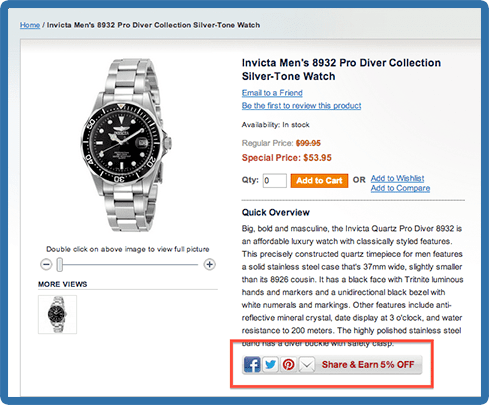
You’ll also want to allow users to shop on your feed, too. To do this, you’ll want to look to a service called Like2Buy, which creates a shoppable social feed that’s compatible with image sharing services like Pinterest and Instagram, both which have a high average order value and conversion ROI, with Pinterest having an average order value of $123.50 and Instagram having an AOV of $62.
Look at how attractive the Nordstrom’s social shopping feed is (below). It’s just one of many ways this retailer has tapped into channels like Pinterest and Instagram, a segment of ecommerce that drives more than 17% of all online sales.
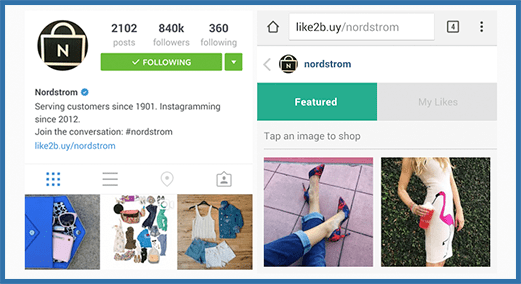
If you’re not building good relationships on social media, you’re missing the mark. In fact, there are probably numerous occasions where you’ve missed out on attracting new customers and getting more sales due to the lack of a social presence. What’s more, it’s also a crucial part of building on an existing relationship and creating a new one that lasts.
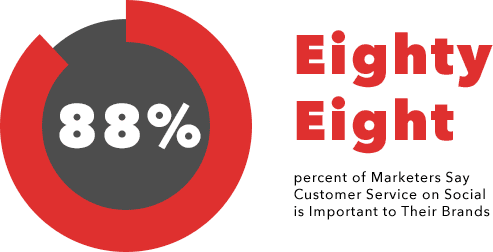
Personalize Your Message
The next step you’re going to want to take is to personalize your message to existing and prospective customers. Social media has changed the way branding works, putting a humanistic voice and flavor to a branded approach that used to be viewed in the form of TV or print ads. In reality, more than 70% of consumers want a human-like interaction with a brand, and chat bots, automated messages and impersonal approaches deter consumers and have the potential to comprise the relationship.
This is why a personalized branding approach is mission-critical and is also one of best steps you can take to create new relationships and improve upon existing ones. But just how important is it? New studies have determined that personalization of a brand is the key to long-term success and viability.
How important is brand personalization overall? Well, 59% of consumers say that it influences purchasing behavior; 65% say it makes them likelier to shop with a brand now or in the future; and 78% say they will only engage in offers that have been personalized.
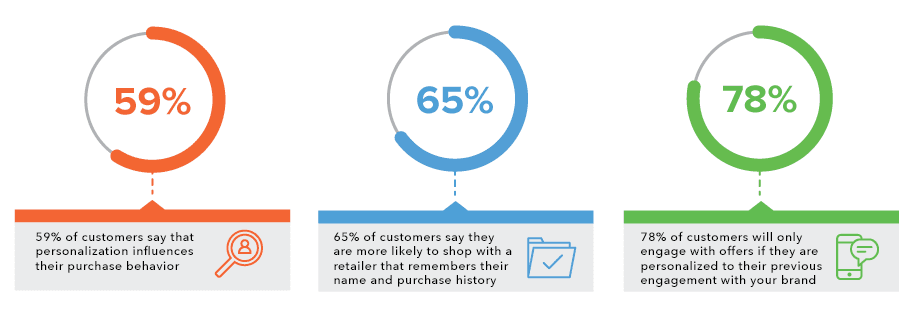
Get More Buzz for Your Brand
Getting more buzz is another method that you can use to foster new relationships and solidify existing ones. There are several methods that you can use to create buzz.
Here are a few starter tips for you:
- Blog like you mean it: New studies prove that online stores that blog daily reap huge rewards in the form of a 130% increase in ROI. What’s more, blogging helps increase conversion rates by as much as 13% because it drives organic, targeted leads to your website.
- Issue press releases frequently: Getting your brand in front of as many eyes as possible is a great way to create more buzz. More than 80 million consumers prefer to get their news from an online source, and issuing ecommerce press releases is the fastest, easiest and most cost-effective way to reach them.
- Improve your SEO: How you optimize your online store for search can mean the difference between more traffic and new customers or the latter. Getting your ecommerce SEO in a good place may require that you consult with a professional or rely on a variety of DIY videos and publications to learn the best standards and practices. The result will be a surefire increase in traffic and conversions.
- Lean to free services like HARO: HARO stands for Help a Reporter Out. It’s a free service that you can sign-up for that sends you several emails per day with lists of articles reporters are seeking sources for. Ecommerce is a common topic that comes up. Simply reply to applicable emails/reporters requesting interviews and quotes, and get a ton of PR for nothing.
Getting more buzz for your brand helps you attract new customers and keeps your brand in the eyes of existing customers. It’s a great method you can use to create new relationships and expand on existing ones. Along the way, make sure you’re using the right ecommerce CRM software to nurture and sustain these relationships.
Host a Flash Sale, Often
The relationships that you have and maintain with your existing customers are priceless. So, don’t leave them in the dark about your brand for too long. One of the best ways to keep your products and offerings relevant is to host a flash sale and often.
Popular brands like Wayfair use this method to stay in front of customers’ eyes, and to great success. This past summer, when sales are typically sluggish in ecommerce, Wayfair reported an order increase of more than 300% from hosting flash sales.
Not only are flash sales a proven way to increase average order value, they also help improve loyalty and retention by offering customers a one-time deal that they’d be hard-pressed to find elsewhere.
When promoting your flash sale, make sure you’re also tapping into the power of social commerce to reach new customers and inform existing ones. A quick look at the chart below can give you an example of just how powerful a tool social commerce and blogging can be for your online store.
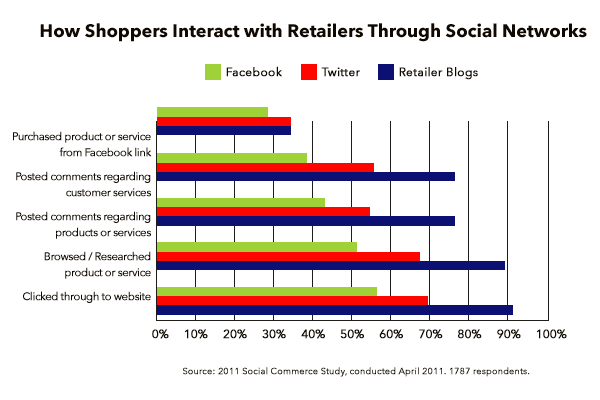
One last piece of advice here is to spice up relationships with digital coupon offerings that attract more customers to your brand while exciting your existing customer base.
How can digital coupons and promo codes help? More than 57% of consumers redeem at least one digital coupon per year in the ecommerce industry, with 68% agreeing that they increase brand awareness and generate loyalty. What’s more, adding digital coupons to emails, like your flash sale newsletter, can improve conversions by as much as 48%.
Use The Right Tools for Engagement
How are you engaging with your new and existing customers? If you don’t have the right tools at your fingertips, chances are that you are missing out on powerful engagement opportunities that you can use to grow your brand, improve loyalty and increase retention. This is where an ecommerce CRM software solution comes into the picture.
Ecommerce CRM helps you:
- Get a 360-degree view of the customer journey.
- Put a name and face to all your cross-channel orders.
- Consolidate data of your ecommerce order activity to generate new sales.
- Improve relationships with each individual customer.
- Generate invaluable business intelligence that you can use to improve your brand.
- Learn about your customers’ habits, trends and behavior.
- Send important updates, cross-sells and up-sells to the right customers.
- Connect your entire back office team to improve relationships.
- Streamline dispute mitigation, shipping and returns.
- Improve operational efficiency and accuracy.

No matter whether you are selling using a platform like Shopify or 3dcart or if you need a Magento CRM, the best way to improve relationships with your customers is by having the right ecommerce customer relationship software powering your backend to streamline your efforts.
No wonder 91% of businesses with 11 or more employees use a CRM to improve relationships with customers. But that’s not the only reason. New studies reveal that CRM can improve your ROI with each customer by as much as 245%, with an ROI that equates to a return of $5 for every $1 you invest.
Here are some other interesting facts about CRM:
- A 41% revenue increase is realized with CRM.
- Leads that are nurtured in the CRM convert 47% of the time.
- Conversion rates can improve by 300% with CRM in place.
- Average purchase value can improve by 40% with CRM.
- Customer service labor costs reduce by 40% or more.
- CRM improves customer service by as much as 74%.
- Average order value increases by 40% or more.
Need Even More Tips?
Take a look at this infographic we’ve created. It delivers some veritable statistics about CRM that can’t be ignored. Wondering how a CRM can help you improve relationships with your customers from day one? Read our related guide: The Ultimate Guide to Ecommerce CRM Software.

What You Should Do Now
Here are 3 ways ReadyReturns can help you deliver amazing return experiences that eliminate prepaid labels and boxes, delight customers, and protect your margins:
Schedule a Demo – See how ReadyReturns turns product returns into your competitive advantage with “Amazon-like” returns and cost-saving features.
Start Your Free Trial of ReadyReturns (No CC Required) – Set up in minutes. Instantly offer QR code returns, product exchanges, and custom return rules that turn frustrated customers into repeat buyers.
Try ReadyCloud at No Cost – Why manage shipping and returns separately? Get ReadyShipper X, ReadyReturns, and more in one unified platform for seamless fulfillment and order management.
Share On:








